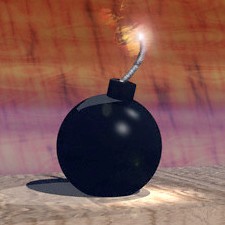Aug 24 2010
Chemotherapy, while an effective cancer treatment, also brings debilitating side effects such as nausea, liver toxicity and a battered immune system.
Now, a new way to deliver this life-saving therapy to cancer patients ¯ getting straight to the source of the disease — has been invented by Dr. Dan Peer of Tel Aviv University's Department of Cell Research and Immunology and the Center for Nano Science and Nano Technology together with Prof. Rimona Margalit of the Department of Biochemistry and Molecular Biology.
 Drs. Peer and Margalit have developed a nano-sized vehicle with the ability to deliver chemotherapy drugs directly into cancer cells while avoiding interaction with healthy cells, increasing the efficiency of chemotherapeutic treatment while reducing its side effects.
Drs. Peer and Margalit have developed a nano-sized vehicle with the ability to deliver chemotherapy drugs directly into cancer cells while avoiding interaction with healthy cells, increasing the efficiency of chemotherapeutic treatment while reducing its side effects.
Drs. Peer and Margalit have developed a nano-sized vehicle with the ability to deliver chemotherapy drugs directly into cancer cells while avoiding interaction with healthy cells, increasing the efficiency of chemotherapeutic treatment while reducing its side effects.
"The vehicle is very similar to a cluster bomb," explains Dr. Peer. Inside the nano-vehicle itself are tiny particles of chemotherapy drugs. When the delivery vehicle comes into contact with cancer cells, it releases the chemotherapeutic payload directly into the cell. According to Dr. Peer, the nanomedical device can be used to treat many different types of cancer, including lung, blood, colon, breast, ovarian, pancreatic, and even several types of brain cancers.
Their technological breakthrough was recently reported in the journal Biomaterials.
A sweet payload to trick cancer
The key to the drug delivery platform is the molecule used to create the outer coating of this cluster nano-vehicle, a sugar recognized by receptors on many types of cancer cells. "When the nano-vehicle interacts with the receptor on the cancerous cell, the receptor undergoes a structural change and the chemotherapy payload is released directly into the cancer cell," says Dr. Peer, which leads to more focused chemotherapeutic treatment against the diseased cells.
Because the nano-vehicle reacts only to cancer cells, the healthy cells that surround them remain untouched and unaffected by the therapy. The nano-vehicle itself, adds Dr. Peer, is made from organic materials which fully decompose in the body once it has performed its function, making the treatment safer than current therapies.
Clinical trials coming soon
This drug will be an improvement on anything currently on the market, says Dr. Peer. Delivering chemotherapeutics directly into cancerous cells themselves is not only more potent, but also much safer.
Drs. Peer and Margalit are working with ORUUS Pharma in California, which has licensed the "cluster bomb" platform from the university and can ensure a quick transition from the lab to clinical trials, which should begin in two years or less, says Dr. Peer.
Source: http://www.aftau.org/